We’ve all heard about them, talked about them, and maybe even looked them up on Google, but in the end, most of us probably figured a full-size electric dirtbike is an expensive and impractical novelty motorcycle only those with deep pockets could afford to add to their toy collection… until now. Alta Motors has just released an upgraded 2018 Redshift MX model as well as its all-new Redshift MXR, and we finally got to throw a leg over both, not only to see if they lived up to the hype, but how they stack up to their gas burning rivals.
Before I start talking about the bikes, I want to say that I’m just like 99% of you who have probably never ridden an Alta before. I’ve always wanted to see what all the fuss was about and learn how similar (or different) they were compared to a regular gas-powered bike. Honestly, I was a little scared once I was finally sitting on one all geared up and ready to go – more nervous, believe it or not, than the first time letting the clutch out on a CR500, to put that in perspective…
With all 120 ft-lbs of torque instantaneously available at the countershaft on the MX at any throttle position, including just barely open, and 147 on the MXR, I wasn’t sure how the Redshift would take off. I envisioned myself looping out before even completing one lap at Perris Raceway and going home with my tail between my legs. Fortunately, I had Derek Dorresteyn, Alta’s co-founder and CTO, explain to me that there were four different output maps the rider could easily flip through via a simple switch on the left handlebar.
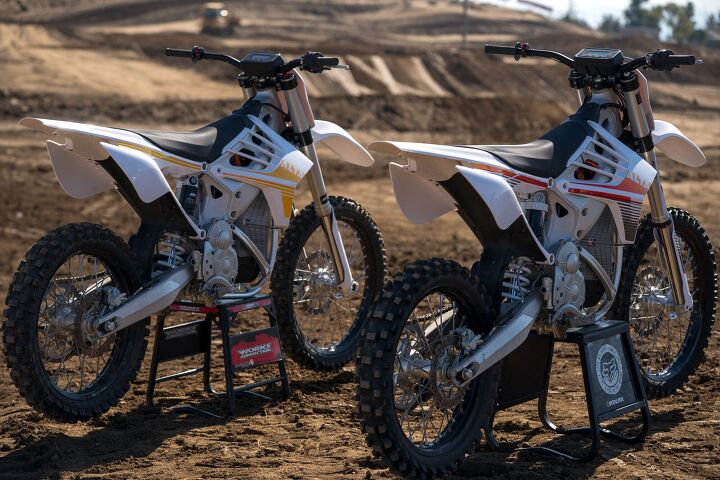
Map 1, the Eco mode, was the mildest – the setting you would “teach your n00b cousin how to ride in,” as Derek put it – perfect. I figured I’d start there and save myself some potential embarrassment before whiskey-throttling to Internet infamy in front of all the Alta execs on their shiny new motorcycle. Maps 2 through 4 (Sport, Performance and Overclocked) increased the power output gradually, with 4 throwing out all you can handle, though higher output obviously limits battery life.
Pretending to grab the clutch and shifting into first as the Alta guys looked on shaking their heads, we were off… Derek was right, map 1 was indeed pretty mild and it wasn’t before a few hundred feet I knew I wouldn’t be here long. Up to map 2, okay. Then 3, alright. Now 4, here we go! The 2018 Redshift MX claims to make 42 hp with 120 ft-lbs of torque, similar horsepower numbers to, or even more, in some cases, than any current 250cc motocrosser.
The 2018 Redshift MX model has a few significant upgrades and updates over the 2017. First off, it makes two more ponies, weighs two pounds less (265 lbs), and takes only two hours to completely charge on 220V – down from two and a half hours before. But hands down, the biggest change comes in the form of its price, which was $14,995 last year and only $10,495 if you were to walk into the dealer today – now we’re talkin’.
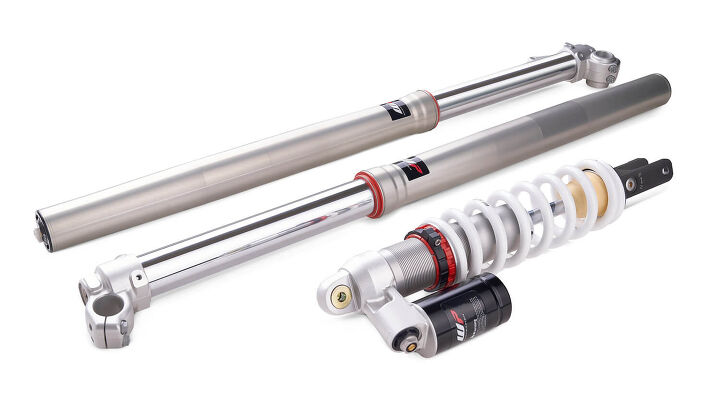
So, what else does $10,495 get you? The Redshift MX has got WP components at both ends, with a 4CS closed-cartridge fork in the front and a 5018 link-type shock in the rear, both offering full adjustability (above). Then there’s the 120 ft-lbs of torque with a single-speed transmission that requires no shifting has you simultaneously in first and fifth gear at the same time (figuratively speaking), which means you can build speed in quite the hurry. Fortunately there’s a pair of Brembos to scrub that speed with a two-piston caliper/260mm rotor combo up front and a single-piston/240mm disc duo out back. Steel-braided brake lines are a nice touch and offer up some solid and incredibly responsive feel, which is especially important on rough, uneven off-road terrain.
It’s got other top-notch stuff like Warp 9 Elite wheels and Bridgestone Battlecross X30 tires, so there’s no need to purchase expensive, beefed-up aftermarket Excel or D.I.D. wheel sets. But enough with all this boring technical jargon – for $10,495 you know you’re getting some quality shit. So, what’s it like to ride?
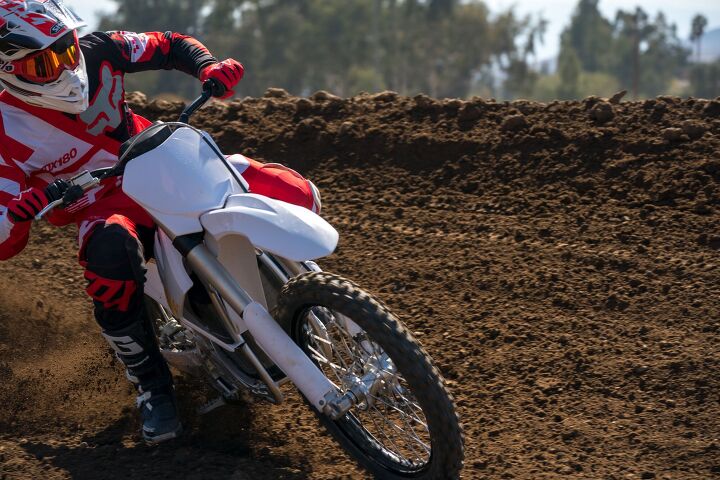
At first, it’s definitely a little weird, like wearing someone else’s shoes. But that’s obviously to be expected. Fortunately, I’ve ridden Perris MX before so I was pretty familiar with the track’s layout and how much speed each obstacle/jump/turn etc. required to clear. My first sight lap was used more to figure out how the throttle engaged and what kind of output it produced.
Knowing I didn’t have to shift gears, how would the throttle position determine how much grunt or speed would be generated? Surprisingly it was super natural and intuitive, though there were instances coming off a jump face where you’d want to make sure you got off the throttle quick, because unlike on a traditional bike, say if you were hitting a jump in third gear tapped, you know the bike isn’t really pulling anymore, whereas on the Alta, the tire just keeps spinning faster and the bike continues to accelerate. If you didn’t time your throttle right, the bike could potentially get ahead of you.
Once airborne, the Redshift MX feels just like any other motocrosser, but one advantage it has is if you happen to find yourself flying nose-low/tail-high, is that panic-revving it levels you out much quicker than a traditional bike. Like I mentioned before, the single speed transmission has you in pretty much every gear, one through five, at the same time in the sense that you’re not just revving out in third, you’ve clicked fourth and fifth and the rotational force brings you back to even keel much faster. But make sure to get off the gas, or throttle rather, before landing because the bike will take off on you.

Once I got used to how the throttle reacted to various inputs, getting over the sound (or lack thereof) was the next obstacle. The motor generates a whizzy-whine that definitely lets you know how fast it’s spinning, but it was the sound of hearing the suspension working, the rocks clanking off the fenders and the tires tracking or skidding that was most interesting. Who knew they made that much noise?
When you lock up the rear wheel, everything including the motor goes silent, which gives you the feeling you just stalled. Not the case – grab a hand-full of throttle and you’re off again. After a few laps of getting used to hearing an all new set of sounds and getting a feel for the brakes, riding the Redshift MX became just as natural as a regular dirtbike, if not easier. Not having to anticipate shifting coming into a corner really lets you focus more on body positioning and line selection, and you can just about give it as much throttle as you want . The 120 ft-lbs of torque takes care of the rest. There’s also something to be said about the seat. It’s comfortably soft without feeling the frame rails or plastics, but the seat-cover is incredibly grippy and keeps the rider in place well – so much so that I kept having to re-tuck my jersey.
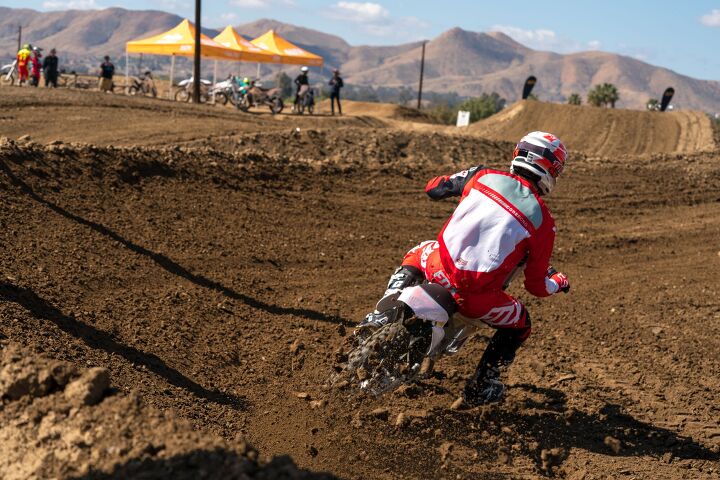
After 10-15 laps on the MX, I felt I had a good idea of what it was all about, so it was time to pull in, give my arms a rest and get set up on the MXR. The main differences between the MX and MXR is that it makes a claimed 50 hp (8 more than the MX) with 147 ft-lbs compared to 120, weighs 259 lbs vs. 265, and only takes 1.5 hours to fully recharge from a 220V outlet. Now, you’d think this model would take the $14,995 price tag of the outgoing ‘17 Redshift MX, but in fact it’s only $1,500 more than the ’18 MX – $11,995 out the door.
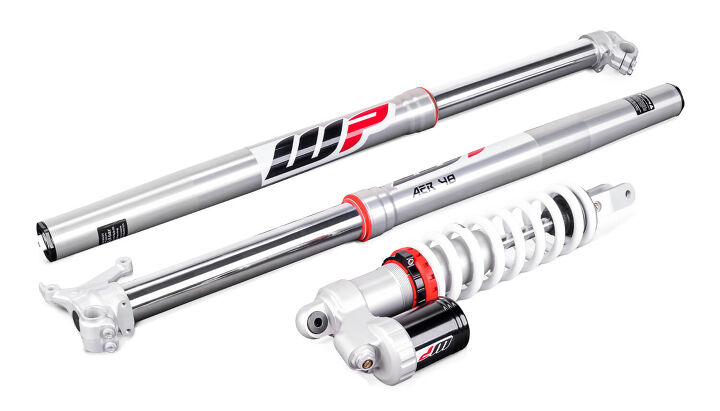
The additional $1,500 gets you more than just extra horsepower, torque and less weight, though I’d say that’s a fair bargain for these improvements alone. The MXR is also graced with upgraded suspension from WP. The front fork is now an air-sprung AER 48, and the rear is a 5018 that’s been specifically re-tuned with improved valving and linkage dynamics for the MXR. Jumping from the MX to the MXR, I could immediately feel the difference in the way the suspension performed. It was definitely stiffer, which allowed softer and smoother landings (that sounds like an oxymoron, I know) which meant you could push it harder into turns as well.
They weren’t terrible, but I didn’t like the initial suspension settings, as the rebound was just a little too fast for me initially, but a few clicks changed that in no time. I do wish I could have played around with the clickers some more, but you can only get so much done in a few hours of seat time. Some guys let a little pressure out of the forks, but I’m on the heavier side of what stock suspension is initially set up for, weighing around 190 lbs fully geared up, so the extra stiffness played in my favor. The MXR also comes fitted with Dunlop Geomax MX3S tires instead of the X30s on the MX.
I normally ride a CRF450R that’s hopped-up everywhere including the motor, so the MXR was definitely more my speed, though I would say that its power output is more comparable to a 350 than a 450. Also, you could absolutely feel the extra 27 ft-lbs of torque over the MX, and the extra 8 hp for that matter, too. The MXR can easily loft the front end coming out of any turn with ample traction, which was awesome because, if the track was straight enough coming out of the corners, you could ride out a power-wheelie as far as you wanted without ever running out of gear.
Since I had a good feel for what the Overclocked map 4 felt like on the MX, that’s the setting I had the MXR in from the get-go, though it also has maps 1-3. Now, as far as battery life goes in this highest output map, it held up for just about as long as I would typically spend at the track on any given day. I would have liked for it to have lasted longer (that’s what she said) but there’s no reason why you can’t bring the charger with you to run off a generator to plug into when you’re not riding…
All in all, I had a blast riding both the MX and MXR, and I imagine you’ll see more and more of them at the tracks and on the trails as time goes on because performance-wise, they’re right there with their traditional gas burning rivals. And as far as their cost goes, for people who might still be hung up on spending over $10k for a dirtbike, let us remind you that new 450s are $9,000 or more. Plus, most people will send their suspension out to get sprung and valved for their weight and ability then, most likely, throw a pipe on too. Boom – you’re already well over $10k, if not 11.
And, that’s not to mention the time and cost of ownership when it comes to buying gas, changing oil, cleaning air filters, etc. With an electric motor, you don’t have to do any of that, let alone get your hands dirty. It’s essentially a one-time investment – the only things you’ll need to eventually replace are the tires, chain and sprockets. Additionally, think of all the new areas you could potentially ride without pissing off the neighbors.
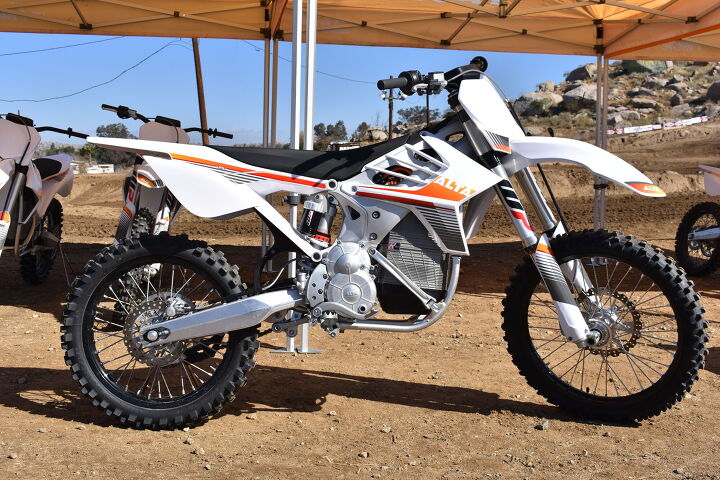
Another thing worth noting is how is how you can actually communicate with others while riding, rather than trying to remember at the next stop. I put a somewhat aggressive pass on another rider as we both took different lines through the same corner, mine edging his out and consequently roosting him. I let out a “sorry, dude!” to which he responded, “it’s all good!” He got me a couple corners later, so I guess that made us even. All of these factors, in addition to the already reduced price, make the cost sound a lot more reasonable, and it adds a whole ‘nother level of fun to riding.
We look forward to getting our hands on a longer-term test bike from Alta so we can really see what it’s like to live with one compared to a traditional dirtbike. But in the meantime, we’ve walked away quite impressed with what Alta engineers have come up with so far. They say these bikes are the “Future of Fast.” Well, they’re certainly fast and definitely forward-thinking, so there’s not much there to disagree with…
| 2018 Alta Motors Redshift MX and MXR | |
+ Highs
|
– Sighs
|
|
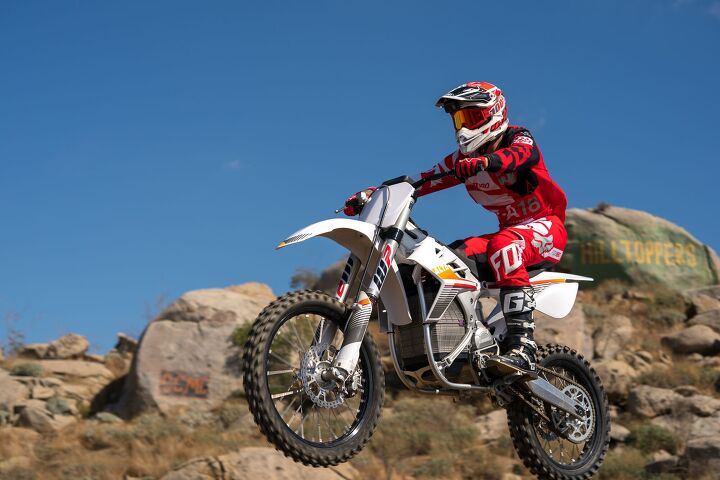
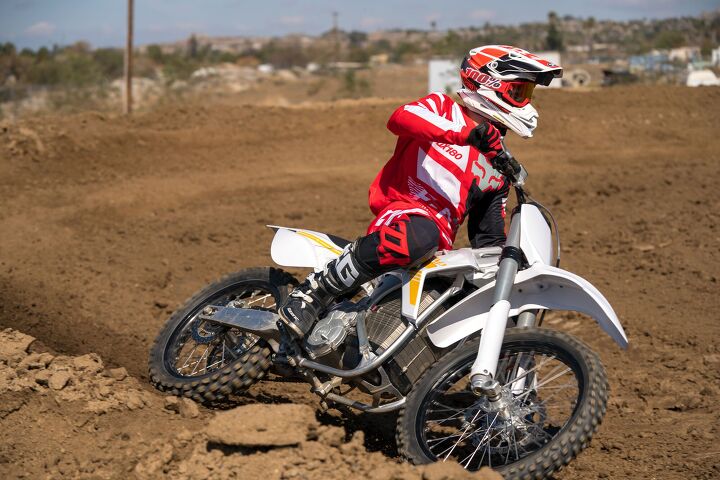

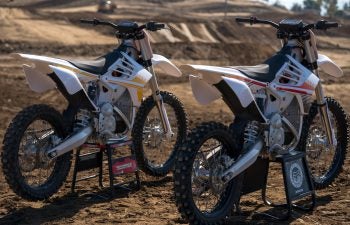
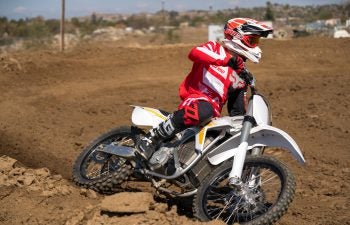
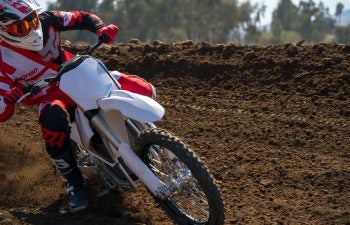
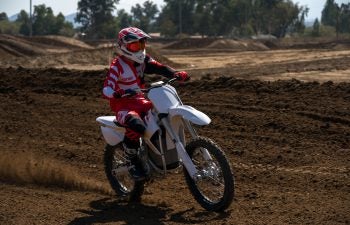
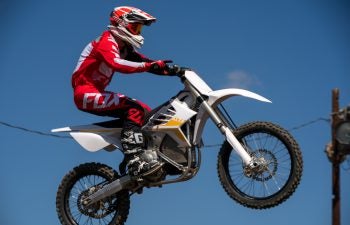
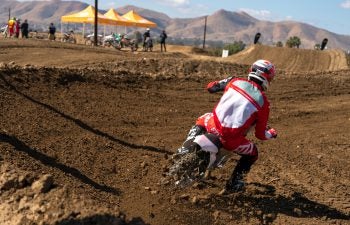
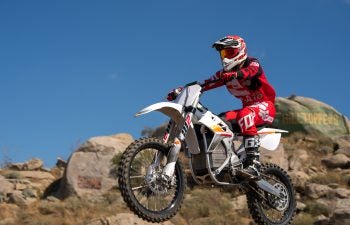
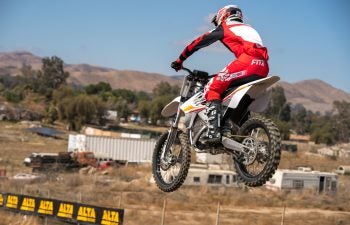
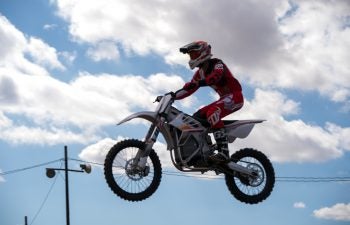
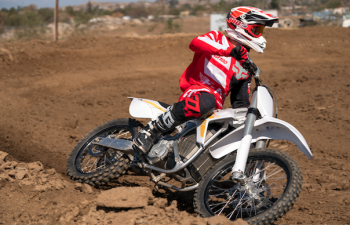
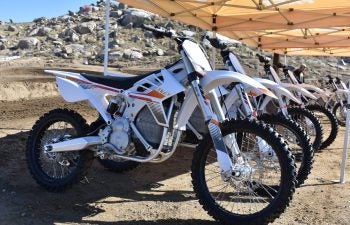
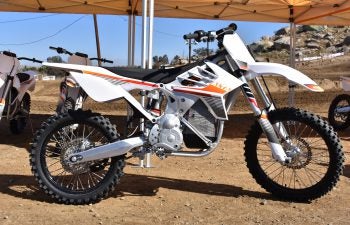
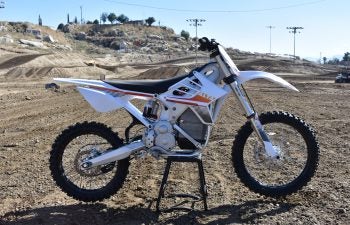
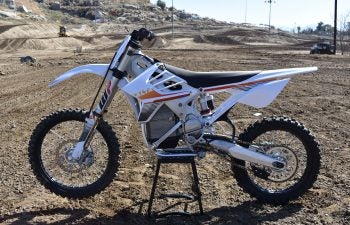
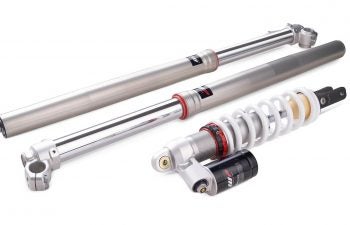
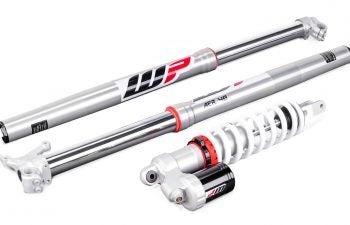
 Your Privacy Choices
Your Privacy Choices